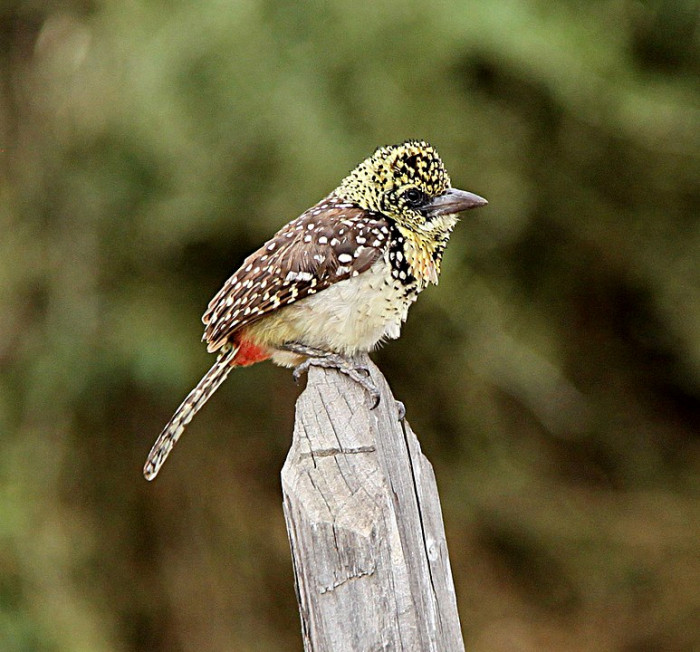Meet the Bird That Is Known for Its Colorful Feathery Bristles Surrounding Its Heavy Bill – The Usambiro Barbet!
Some of you may be familiar with birds, particularly barbets. Also known as Trachyphonus usambiro, the Usambiro Barbet belongs to the family Lybiidae and was originally classified as a subspecies of D’Arnaud’s Barbet.
The Usambiro Barbet was discovered in 1908 from a specimen collected by a German ornithologist and naturalist named Oscar Rudolph Neumann in Usambiro, Tanzania.
Recently, the International Ornithologists' Union (IOC) recognized the Usambiro Barbet as a distinct species.
Its most distinctive characteristic is its impressively large and darker beak, fringed with a colorful display of feathery bristles in hues of white, bright yellow, green, and orange.
In addition to its darker beak, you can differentiate the Usambiro Barbet from others by its relatively shorter tail and longer wings.
Looking at photos of this bird, you will notice that it has a plump appearance. Its head is a faint yellow with noticeably black spots.
The breast area of the Usambiro Barbet is a bright yellow-orange flecked with black, beneath which is a dark breast band.
Its wings are black and white, while the vent is a rusty shade of red.
If you are curious about what these birds feed on, they consume a wide range of insects, fruits, and seeds.
Meet the Usambiro Barbet.
This colorful bird is undeniably cute, right? Look, it stands proudly on the branch, showcasing its beautiful matching colors.
Its large, dark beak is something you can spot instantly.

The Plump-Looking Bird.
Now you get a clearer view of its plump appearance and can see all its colors, from its faint yellow head with black spots to its bright yellow-orange breast that is flecked with black.
This view also clearly shows its dark breast band. Its black and white wings are apparent, along with its rusty shade of red vent.
There is no distinction between the male and female, as they both look the same.
If you are wondering how big this bird can get, it weighs around 37 to 50.5 grams and measures approximately 18 to 19 centimeters in length.

The Usambiro Barbet in Its Habitat.
The Usambiro Barbet dwells in open areas such as shrublands, grasslands, pastures, and savannahs.
You can find this bird in northern Tanzania and southern Kenya, specifically in Serengeti National Park and Maasai Mara National Reserve.

A Solitary Bird.
The Usambiro Barbet does not travel in flocks; this bird prefers to be alone.

They Feed on a Wide Variety of Fruits and Vegetables.
They are often found in plantations, feeding on cultivated fruits as well as vegetables.

They Are Agents of Seed Dispersal Too.
In addition to seeds, fruits, and vegetables, they also enjoy a wide range of insects. Beetles, locusts, cicadas, ants, crickets, dragonflies, scorpions, and even centipedes are among their favorite insects.

What About Reproduction?
They love to nest in tree cavities, where the female usually lays around 2 to 4 eggs and incubates them for 13 to 15 days.
Parenting is a shared responsibility, as both males and females participate in raising the young.

Check This Out If You Want to Listen to Its Sound.
This bird proves that it is not just any ordinary bird. It is undeniably beautiful with attractive colors, plays a vital role in the ecosystem, is an effective insect predator, and is responsible for seed dispersal.
Although they live in a restricted range, this species is not at any immediate risk. Thank goodness!



